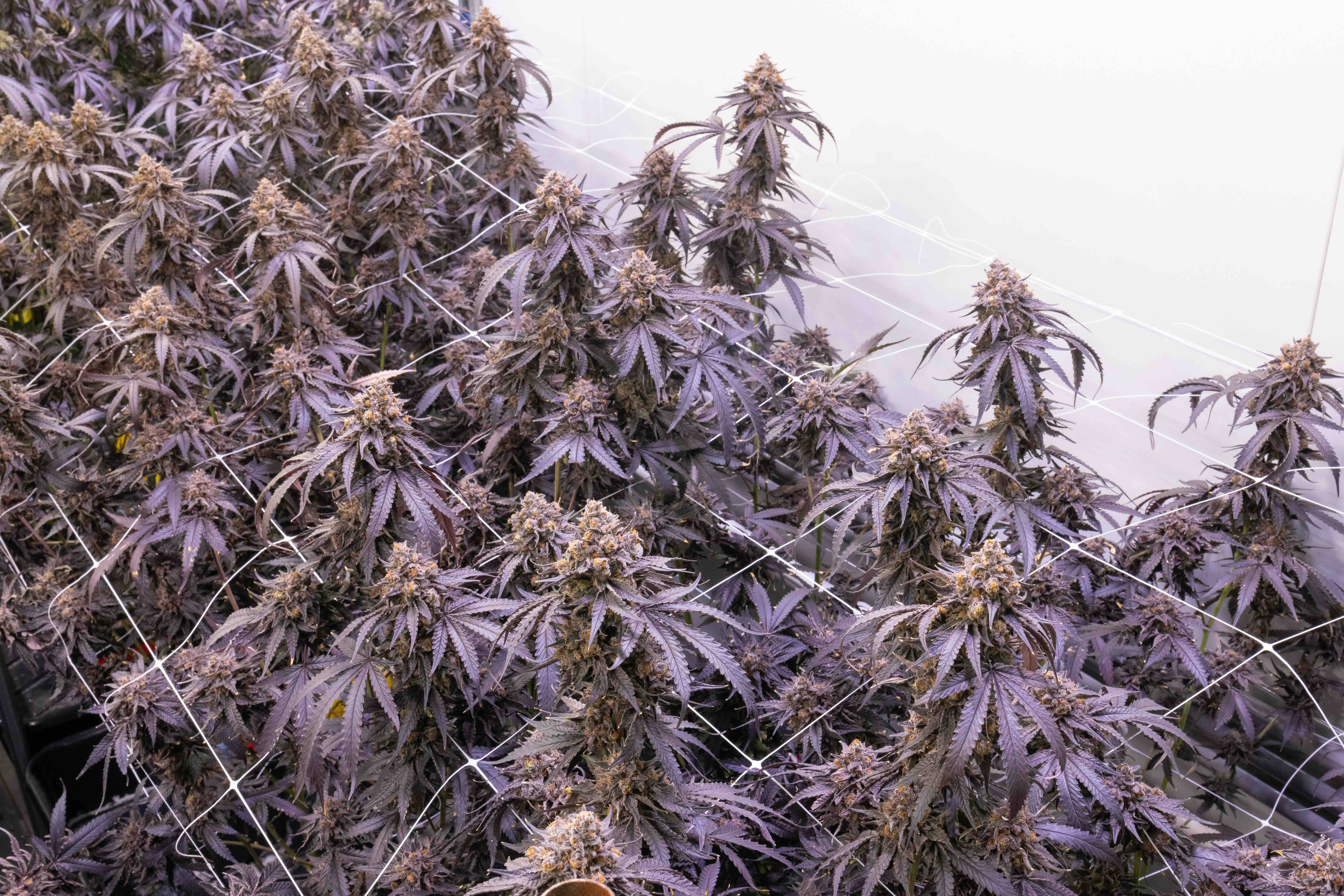Inside Cookies One Log: New Cannabis Crosses Growing to Maturity
 TL;DR: As new cannabis crosses such as Fried Bananas and Frozen Grapes reach maturity, their unique traits begin to show. This stage is when cultivators can finally observe phenotype differences and start identifying potential “keepers” that could shape the next generation of standout strains.
TL;DR: As new cannabis crosses such as Fried Bananas and Frozen Grapes reach maturity, their unique traits begin to show. This stage is when cultivators can finally observe phenotype differences and start identifying potential “keepers” that could shape the next generation of standout strains.
What happens when cannabis crosses grow to maturity?
When new cannabis crosses move past the seedling stage and reach maturity, the real evaluation begins. This is when each plant reveals its individual phenotype, the visible expression of its genetic potential. At Cookies One Log, crosses like Fried Bananas and Frozen Grapes are now showing distinct qualities in structure, aroma, and growth patterns. These differences are what breeders look for to determine which plants have the potential to become future stars in the genetic library.
Why are phenotypes important in cannabis breeding?
Every seed is unique, and no two plants are exactly alike. This is why breeders pay close attention as plants mature:
- Structure: How the plant grows, including its height, node spacing, and bud formation.
- Aroma and flavor: Unique terpene expressions in aroma and the carry through of that expression into flavor.
- Color and resin: Visible markers of potency and bag appeal.
- Vigor and Resilience: How the plant handles its environment.
- Yield: How much finished weight a plant potentially produces.
These traits help breeders identify which plants have the right mix of qualities to be considered “keepers.” Keepers are the rare cultivars that may eventually earn a place in dispensaries and become part of Cookies’ evolving catalog of genetics.
How do Fried Bananas and Frozen Grapes fit into this process?
Both Fried Bananas and Frozen Grapes are standout examples from recent breeding projects. At this stage, their phenotypes are just beginning to express themselves. For Fried Bananas, early signs of vigor and structural consistency suggest potential for strong flower development. Frozen Grapes, on the other hand, is already hinting at rich terpene expression and unique coloration. The traits shown in these plants are key markers for top-shelf as the selection process continues.
What makes this stage critical in the R&D program?
The maturity stage is a turning point. Earlier phases, such as pollination, germination, and early seedling growth, lay the groundwork. Once plants mature, breeders can finally compare phenotypes side by side and ask the big questions:
- Does this plant show the desired balance of traits from both parents?
- Does it stand out from other crosses in the same group?
- Does it have the potential to meet consumer expectations for flavor, aroma, and experience?
- Will the plant grow well given the potential challenges of different growing environments?
This is where science and craft intersect, and where the long-term vision of Cookies’ breeding projects starts to take shape.
Why does this matter for consumers?
The genetics behind every strain on the menu come from years of intentional work. When you see Fried Bananas or Frozen Grapes at maturity, you’re looking at plants that have already been through layers of evaluation and selection. That kind of rigor ensures that only the most promising and unique genetics move forward into cultivation, production, and eventually, into your hands.
FAQs about cannabis breeding and phenotypes
What is a cannabis phenotype?
A phenotype is the set of traits a cannabis plant expresses, such as its smell, flavor, color, and structure, based on its genetics and growing environment.
What does “keeper” mean in cannabis breeding?
A keeper is a plant with standout traits that breeders select for preservation and further development. It may eventually become a new strain available in dispensaries.
How long does it take to identify a keeper?
The process can take months or even years. Breeders observe plants across multiple growth cycles before deciding which ones earn keeper status.
Why don’t all strains make it to market?
Each strain carries unique genetics, but not all express the right balance of traits. Only a select few plants, if any, from each batch are advanced to production.
Key takeaway
Fried Bananas and Frozen Grapes represent the exciting moment when new cannabis crosses grow to maturity and reveal their individual phenotypes. This stage allows breeders to identify potential keepers, setting the stage for future cultivars that could one day define the next wave of Cookies genetics.
Get First Access To The Crosses That Make It Through: